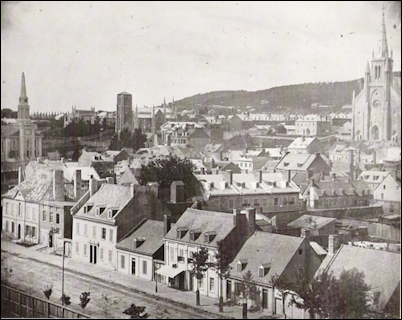"The orphanage rented premises first on St. Lewis Street, and then on St. Antoine. In 1849 it constructed a permanent home on St. Catherine Street, near Drummond."

The Protestant Orphan Asylum (POA) was founded at the meeting called in 1822 to provide for the children from the disbanded Female Benevolent Society. Many of the women who had worked in the Female Benevolent Society were members. The POA was incorporated in 1843; its official Constitution and bylaws were written in 1844 and revised in 1852.
Although the Orphan Asylum was designed for the care of "children of both sexes, having lost both parents," non-orphans were admitted until the Ladies' Benevolent Society was established in 1832. From that point on, single-parent children were admitted only on very rare occasions. The orphanage rented premises first on St. Lewis Street, and then on St. Antoine. In 1849 it constructed a permanent home on St. Catherine Street, near Drummond. Several businessmen donated the building lot, which was part of the McTavish estate, and the Committee purchased an adjoining lot. They added a third lot in 1856 as a playground and garden. In 1894, the orphanage moved to a larger building on Summerhill and Cote-des-Neiges. Both buildings included dormitories, a dining room, one or two classrooms, committee rooms, and a small infirmary.
Over the years 1822 to 1900, a total of 939 Protestant children between the ages of two and twelve were admitted. The number in the institution at anyone time, though, was relatively small. Using as an indication the number listed as present at the time of the annual meeting, we find an average of 33, the largest number being 59, in 1891. The total number of children aided over the course of a year averaged 42, with the largest yearly total being 68 in 1899. The Committee took a special interest in military orphans, who were entered in the institution's Register in red ink. This helped them justify their funding appeals to the government and the Montreal regiment.